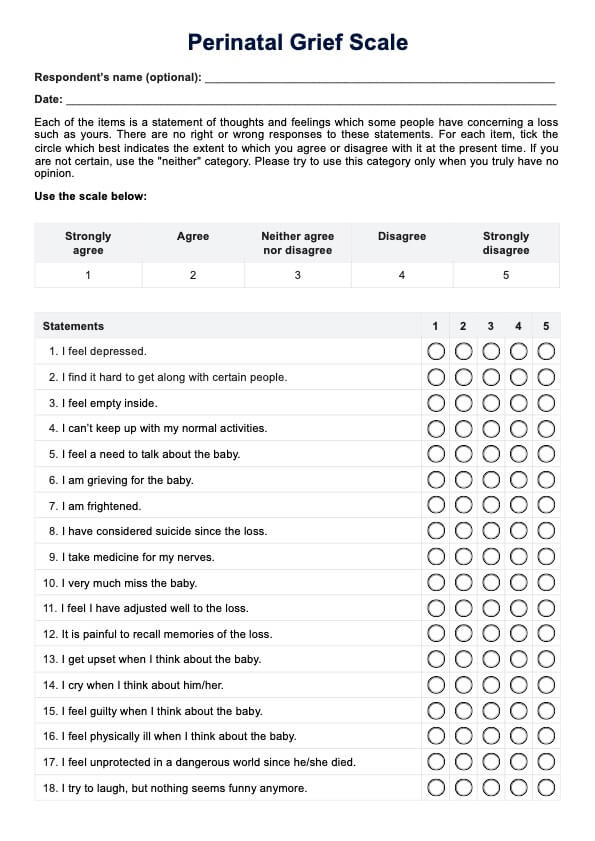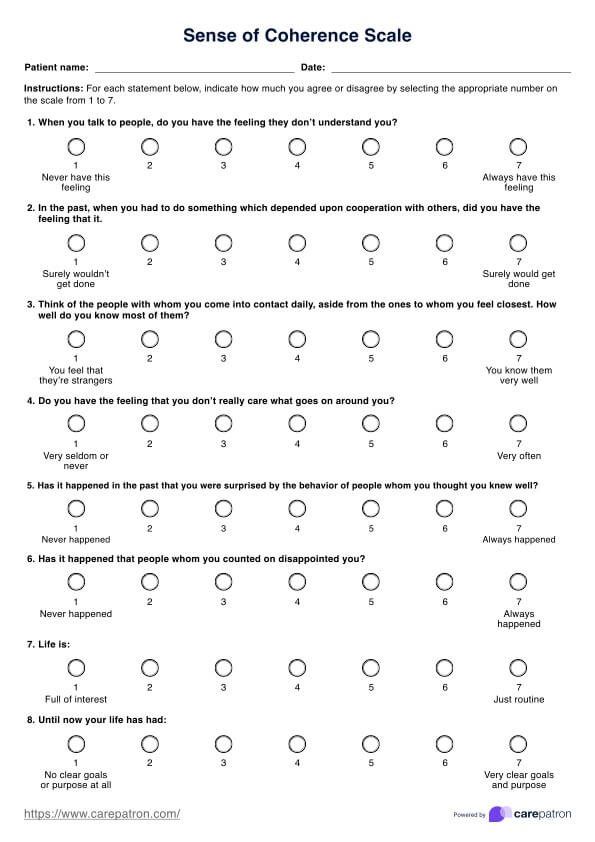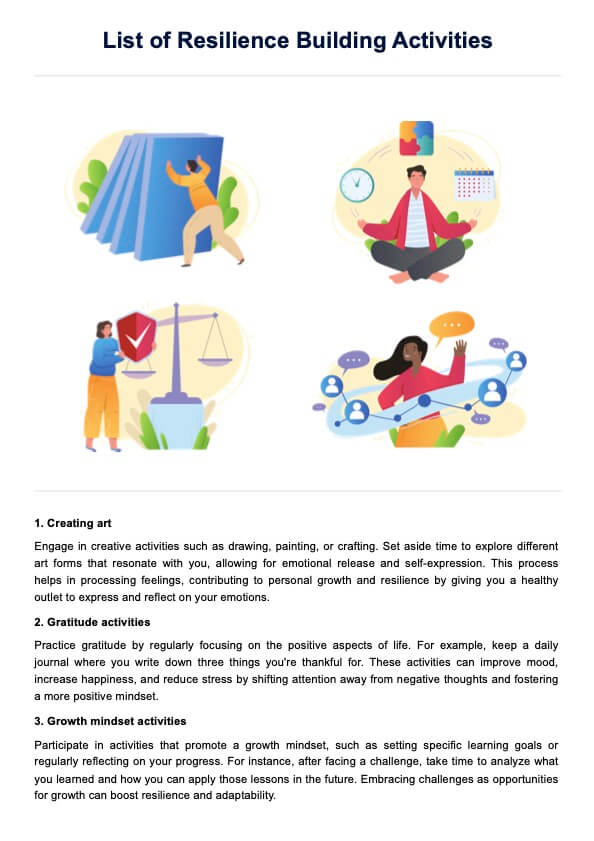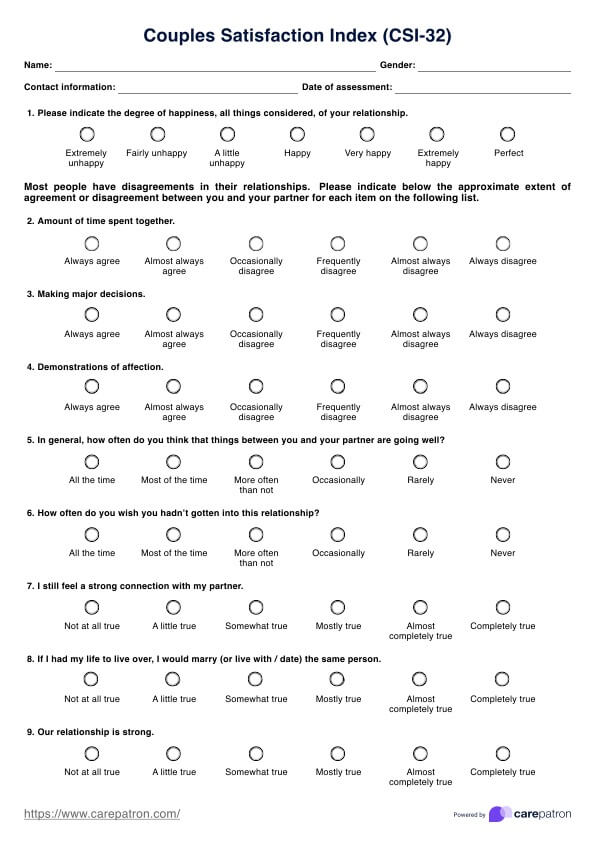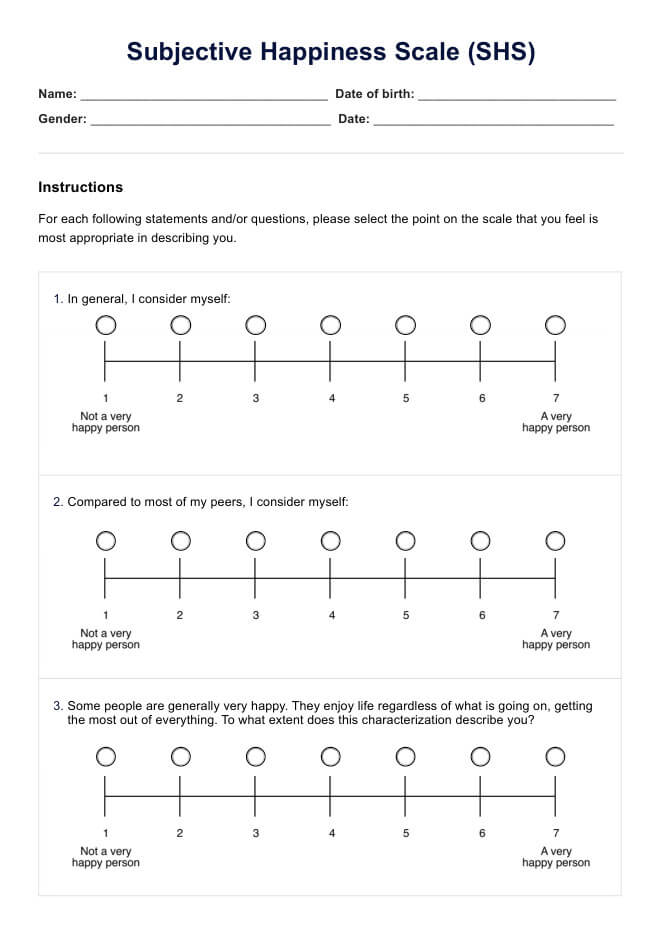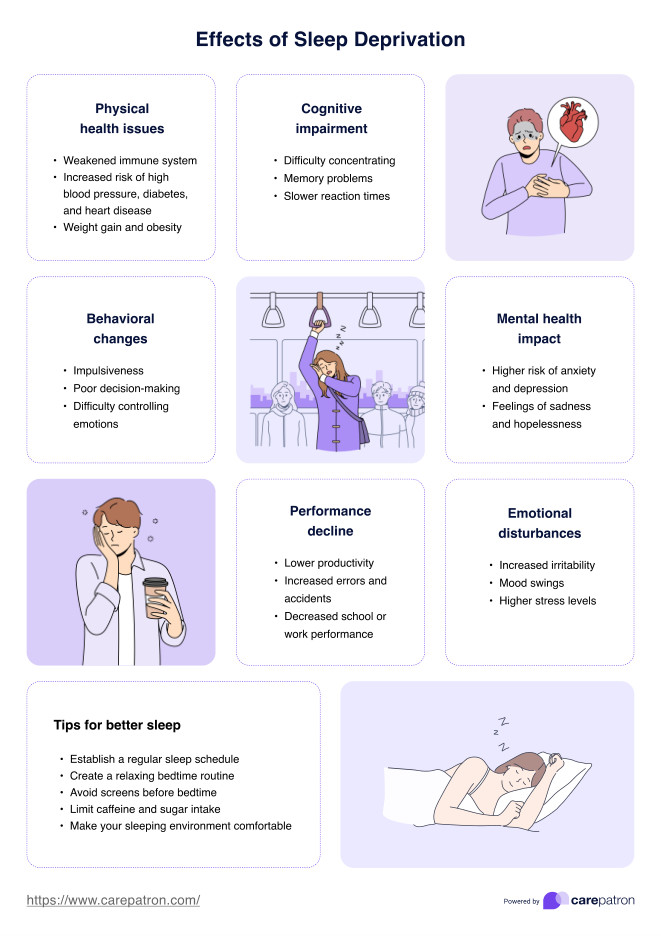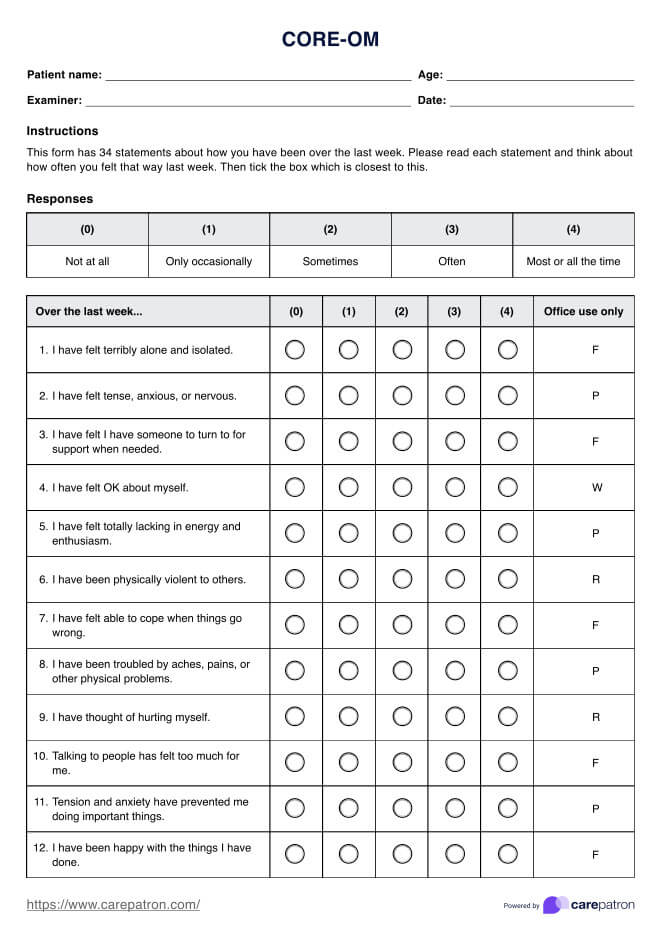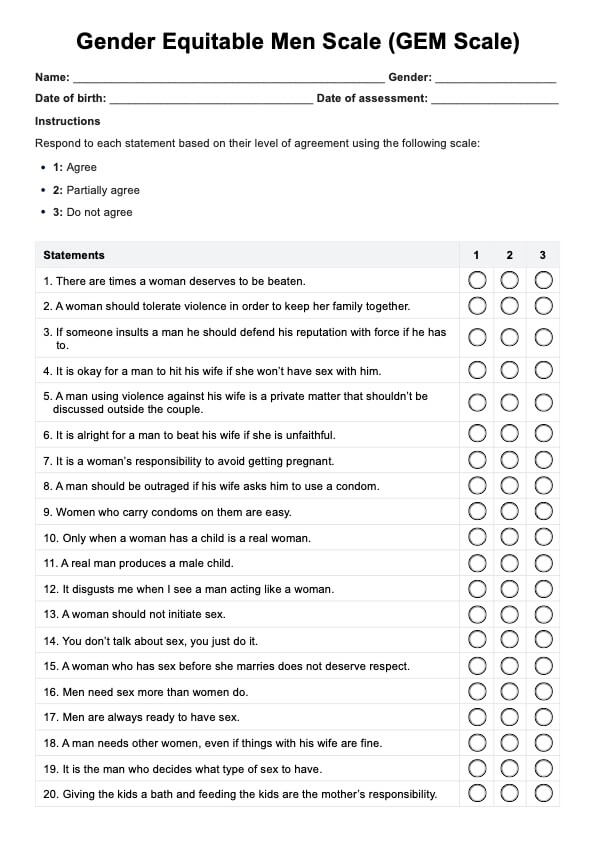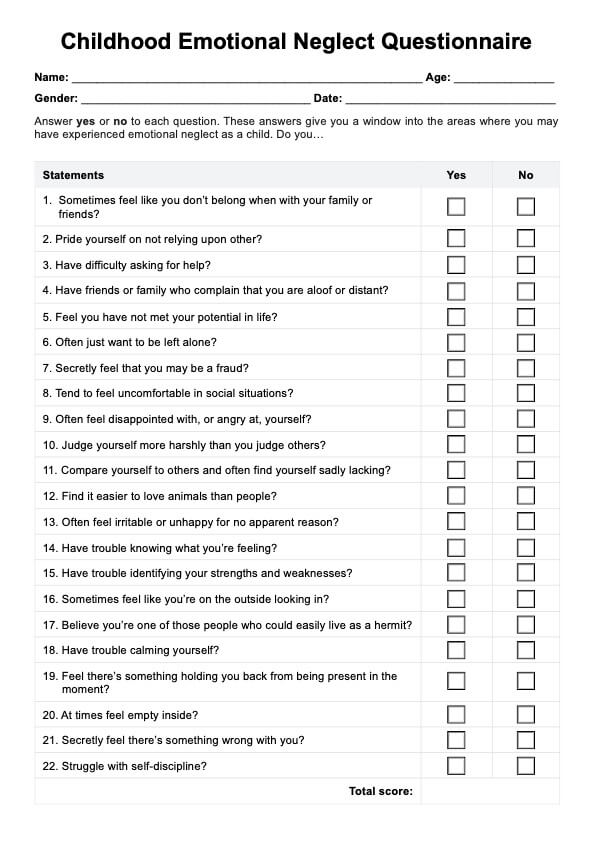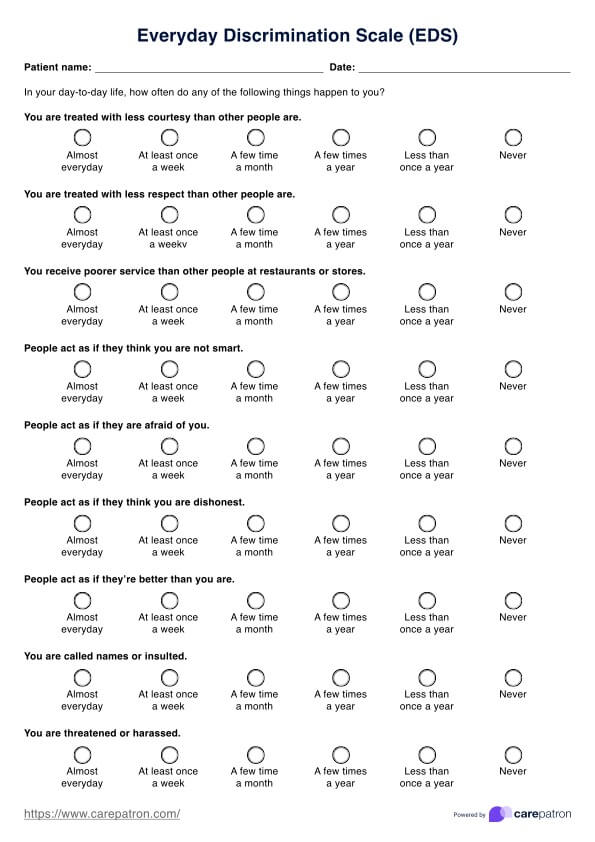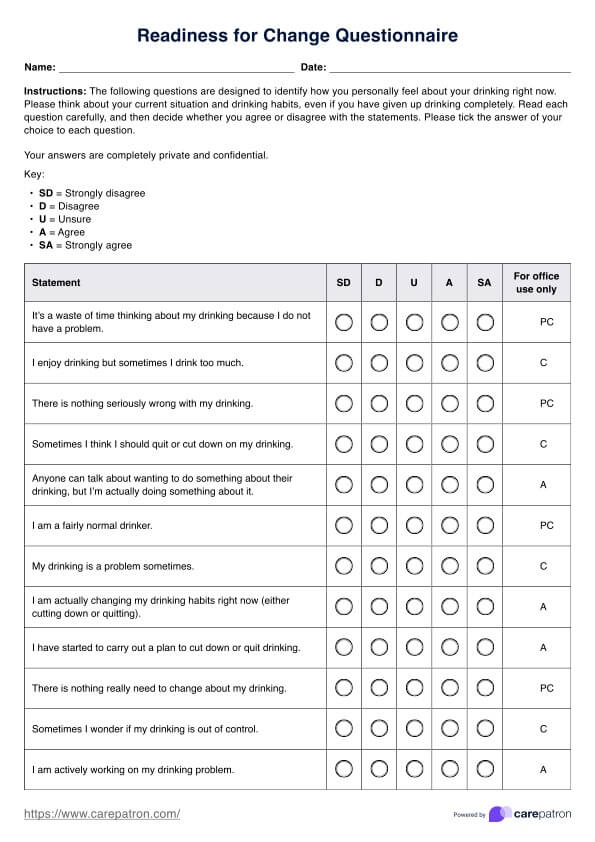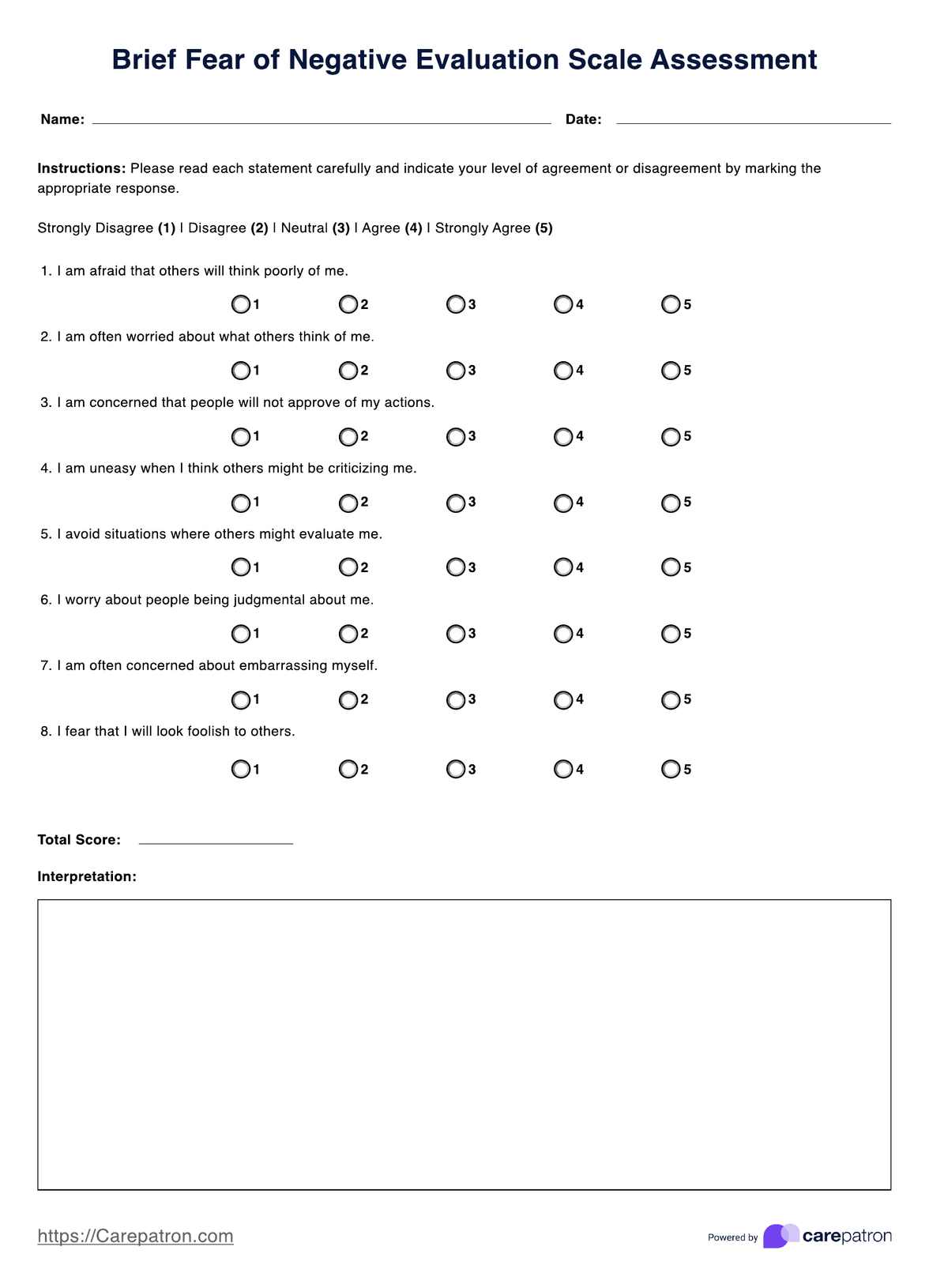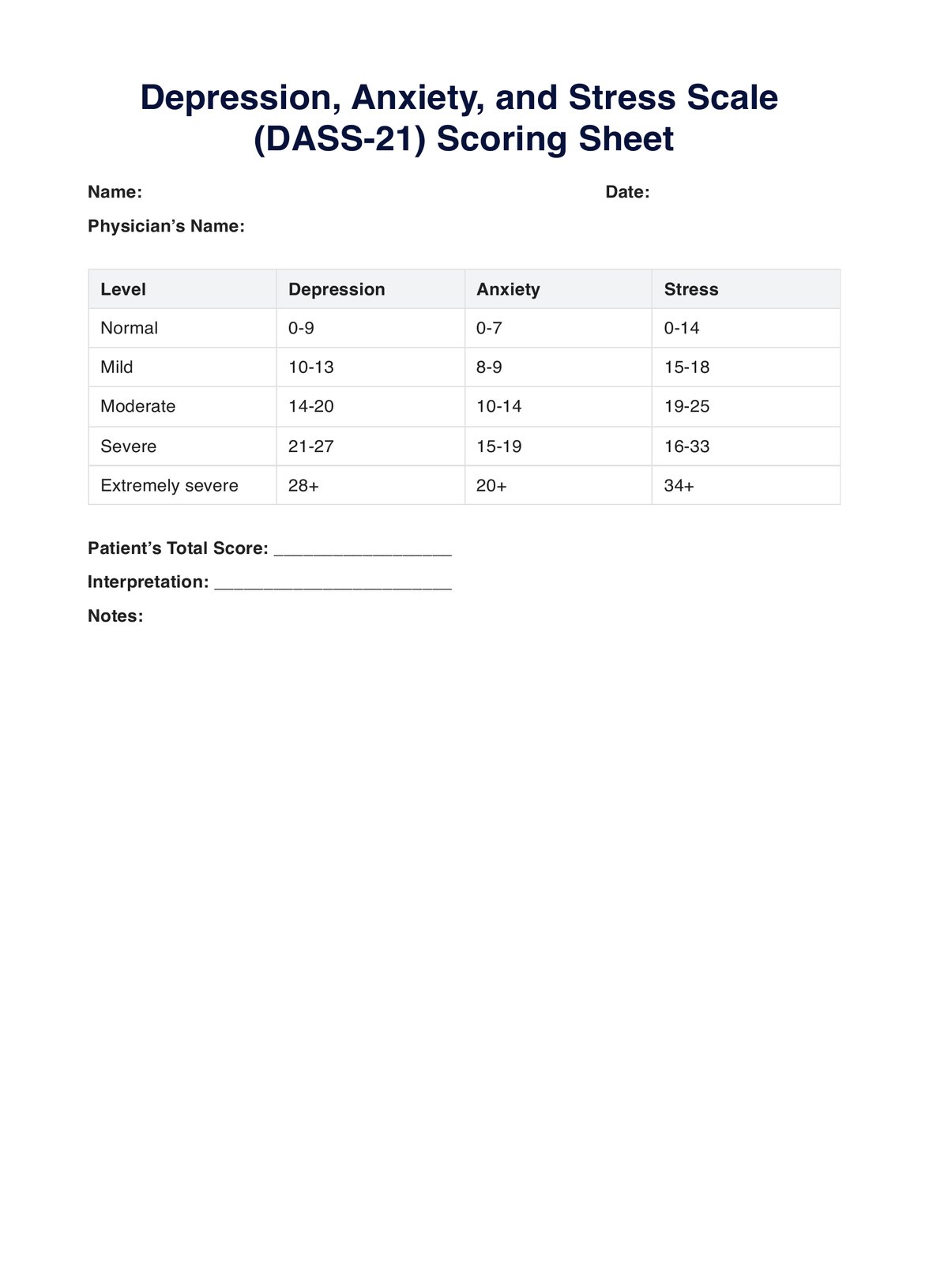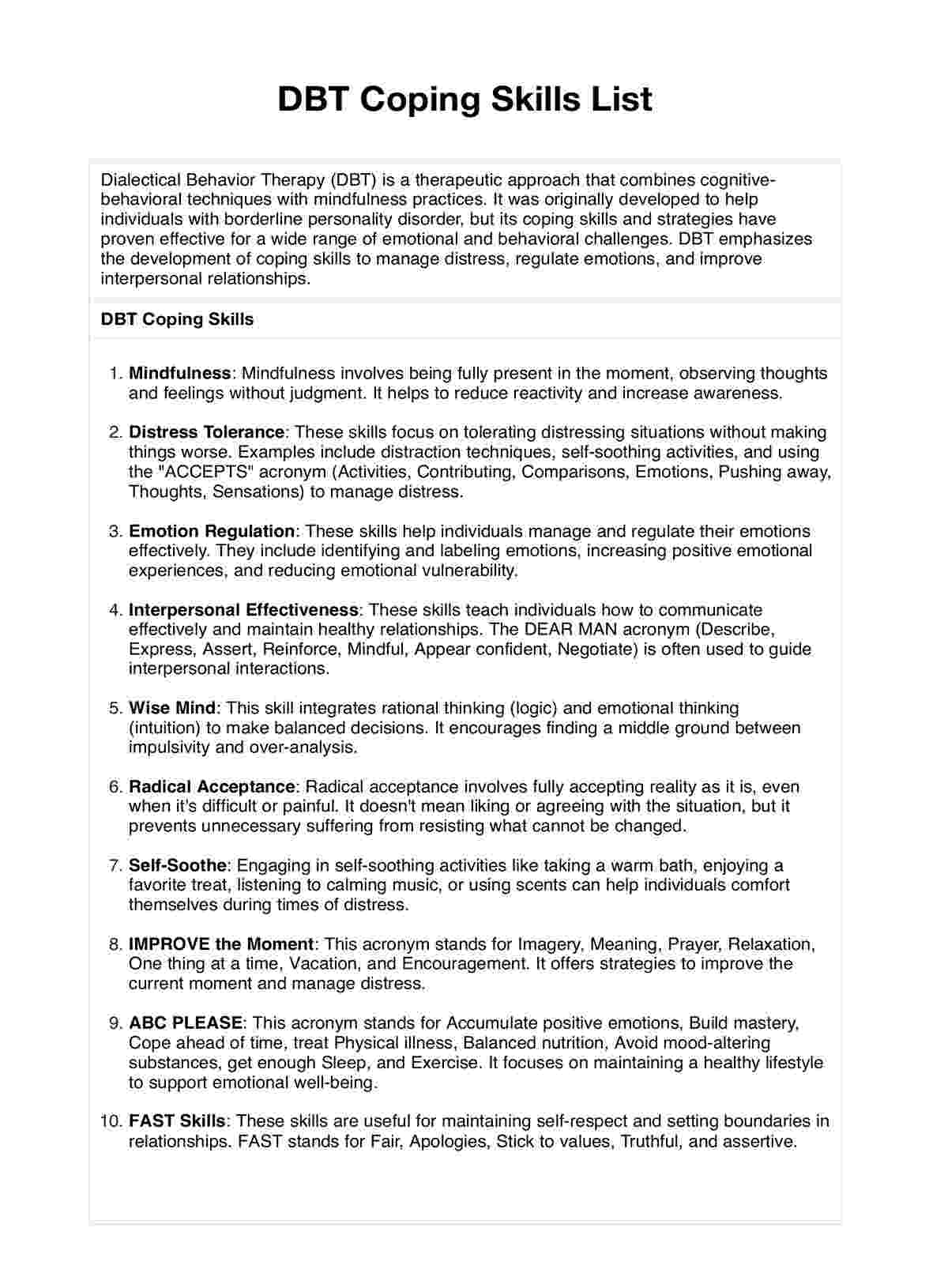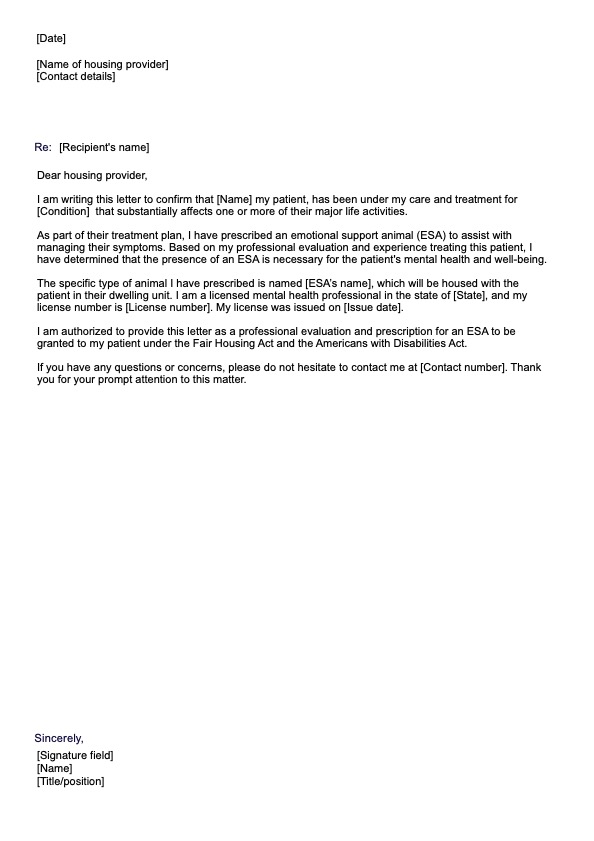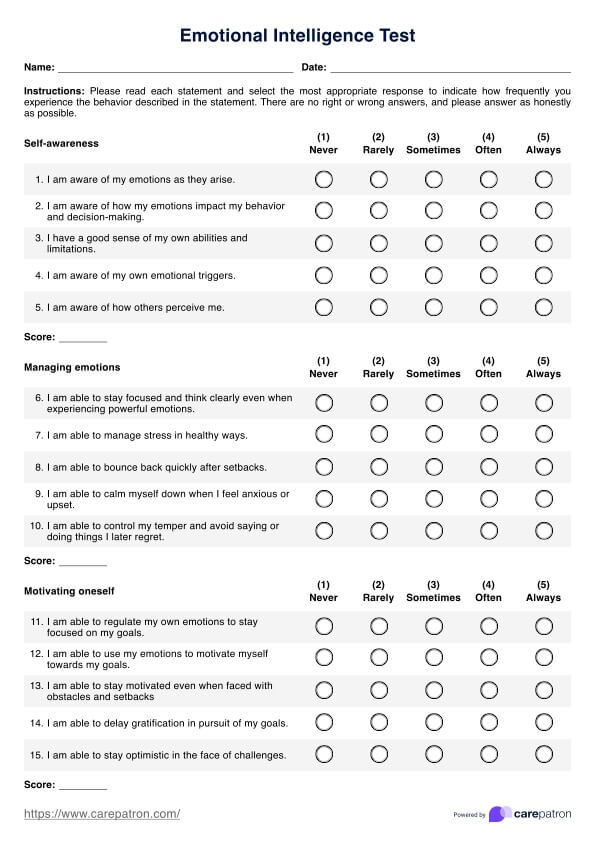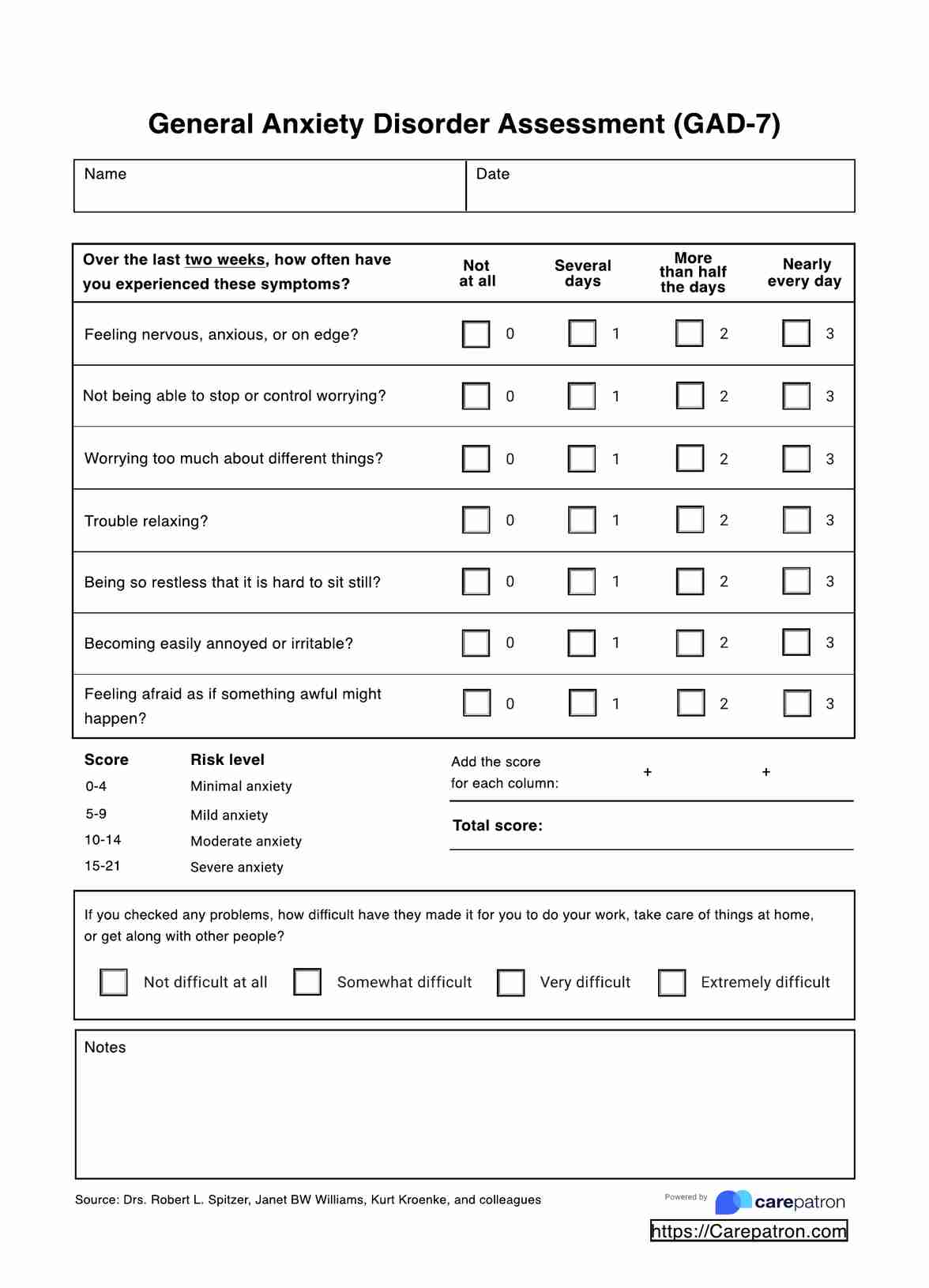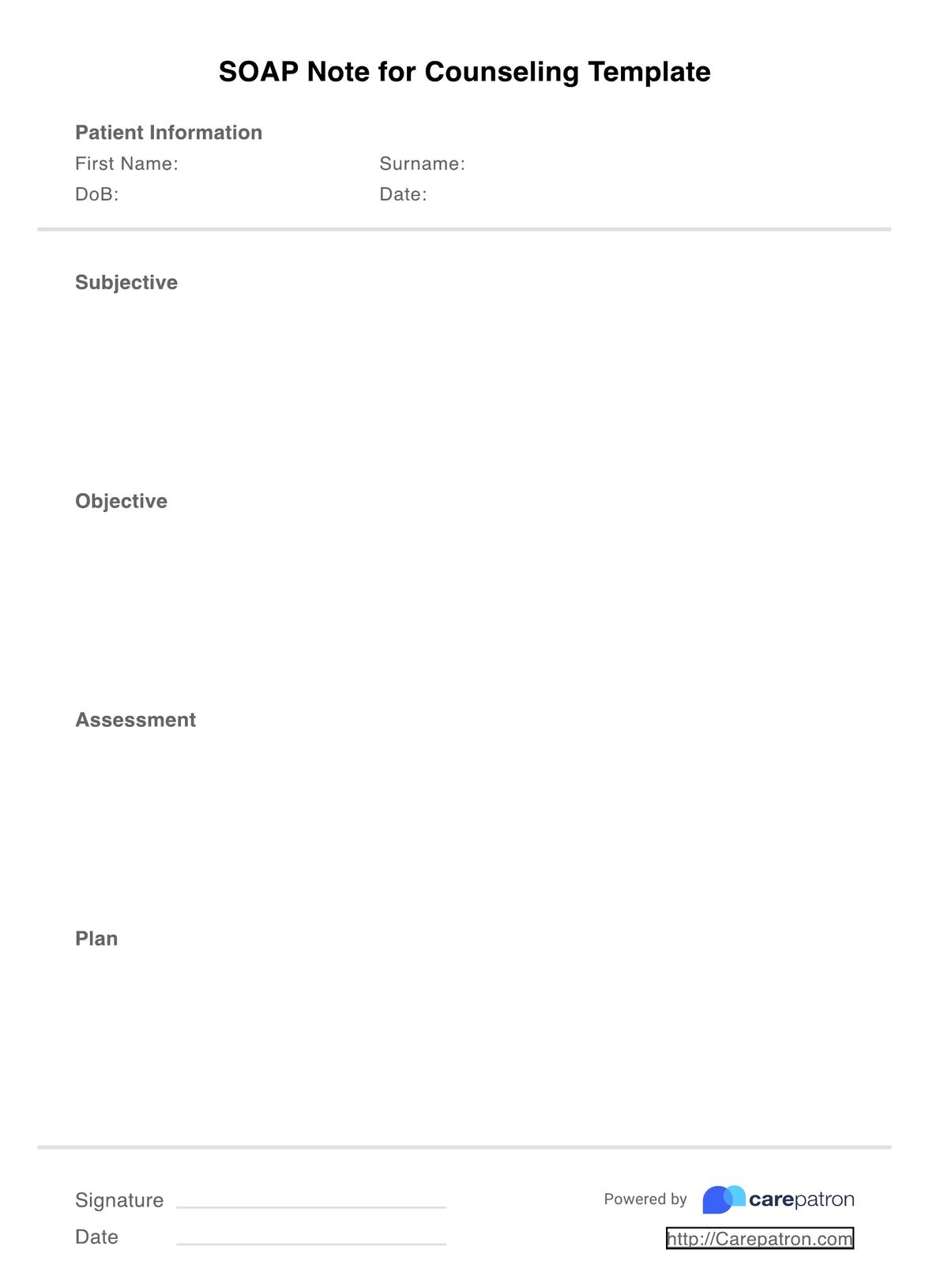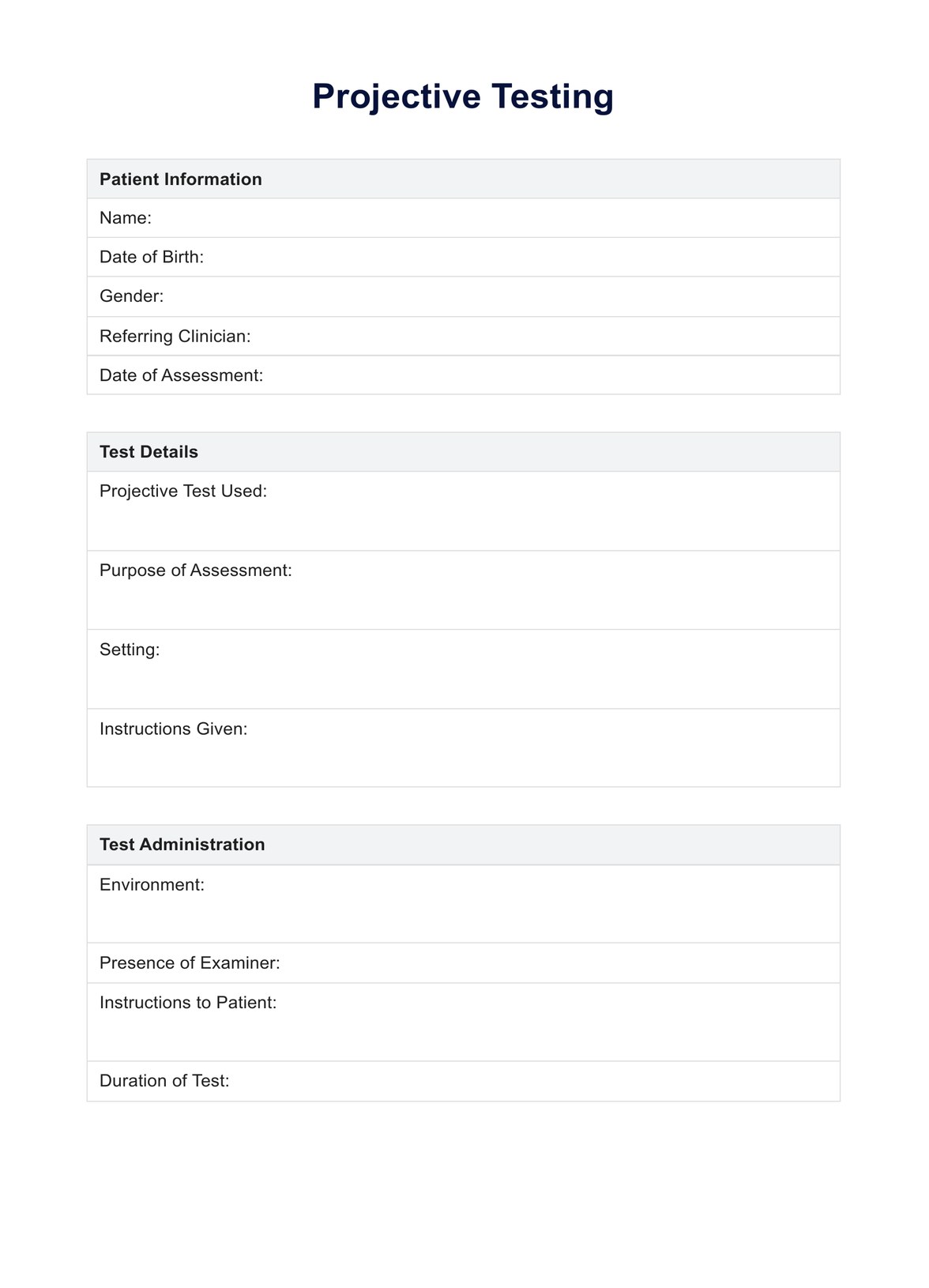Art Therapy Worksheets
Use our Art Therapy Worksheets to help your client unleash their creativity when expressing emotions, thoughts, or interests.


What are Art Therapy Worksheets?
Art Therapy Worksheets are tools that a professional art therapist uses when they practice art therapy. The American Art Therapy Association (2022) refers to art therapy as an integrative mental health human services profession. This form of therapy integrates creative processes and applied psychological theory to enhance the well-being of individuals and communities.
Our template, which features Art Therapy Worksheets, contains structured art projects to help your clients engage with their emotions, thoughts, and interests and become comfortable sharing them with you. This template incorporates an emotion wheel, draw your heart and a crystal ball activity that can serve as a great ice-breaker for your client.
Art Therapy Worksheets Template
Art Therapy Worksheets Example
How to use our Art Therapy Worksheets template?
Once you've downloaded the Art Therapy Worksheets PDF template, which are printable art therapy activities in PDF form, using the link on this page, follow this step-by-step guide to get your clients started on their artwork.
Step 1: Write the name and date
After you've decided which worksheet to work on, ask your client to write their name and date at the top of the worksheet in the spaces provided.
Step 2: Complete the Art Therapy Worksheet
Next, your client will fill out the worksheet/s, following the instructions provided on the template. They will vary.
For example, for the emotion wheel, your client should select the emotions or feelings they want to include, write one in each segment, and illustrate what the feeling means to them with their preferred medium.
Meanwhile, for the crystal ball activity, your client should think and illustrate their future self or a future they see or want to see.
Step 3: Save the template securely if applicable
This last step applies only to therapists who will keep a copy of the original worksheet, which is to store this securely in the client's record. Some clients may keep their worksheets, so you may take a copy or simply write a summary of the activity in your client's notes.
Benefits of using our Art Therapy Worksheets template
There are several benefits to using the Art Therapy Worksheets template that aren't only helping the art therapists save time so they can get back to the important work that they do. In fact, here are just some of the useful features of our art therapy printables:
Pre-formatted
Save time and effort thinking of art therapy prompts and activities. With our template, it's all done for you. As such, our template offers a simple, structured activity without your clients having to spend too much time deciding on the parameters of their projects.
Monitor progress over time
Having your client complete the template multiple times throughout their treatment with you can give you a visual representation of their growth or decline with regard to their self-awareness, self-expression, and more. Having this piece of information is especially helpful in supporting clients dealing with negative feelings, anxiety, PTSD, and self-esteem issues because it will signify whether a treatment needs changing or not.
Engage your creative clients
Your clients will all have different hobbies and preferences in their day-to-day lives, and working with their interests to engage them in the therapeutic process is a smart idea. For your creatively inclined clients, these psychotherapy Art Therapy Worksheets may be just the thing to help them open up and break the ice with you and even enhance social skills if done within a group.
Digitally accessible
If your client has access to a compatible device (tablet, iPad, touch-screen laptop, etc.), this art project can be completed digitally, greatly reducing clean-up time. Simply load the template into your PDF annotating software, and your client will start creating their digital masterpiece.
Reference
American Art Therapy Association. (2022). About art therapy. American Art Therapy Association. https://arttherapy.org/about-art-therapy/
Commonly asked questions
Once your client has completed the worksheet, an important step is discussing their artistic choices and depictions of each emotion. This discussion can be hugely beneficial in helping your client learn to talk about their feelings and build trust with you. Whether you keep a copy of the original worksheet or not, ensure it is stored securely.
It will depend on you and your session goal with your client. For example, if you're incorporating positive psychology in your sessions, you may want to use the draw your heart worksheet and other tools you have.
That will depend on your client and whether or not you will provide aid or prompts. However, at least 30 minutes should be more than enough time for them to finish the worksheet.


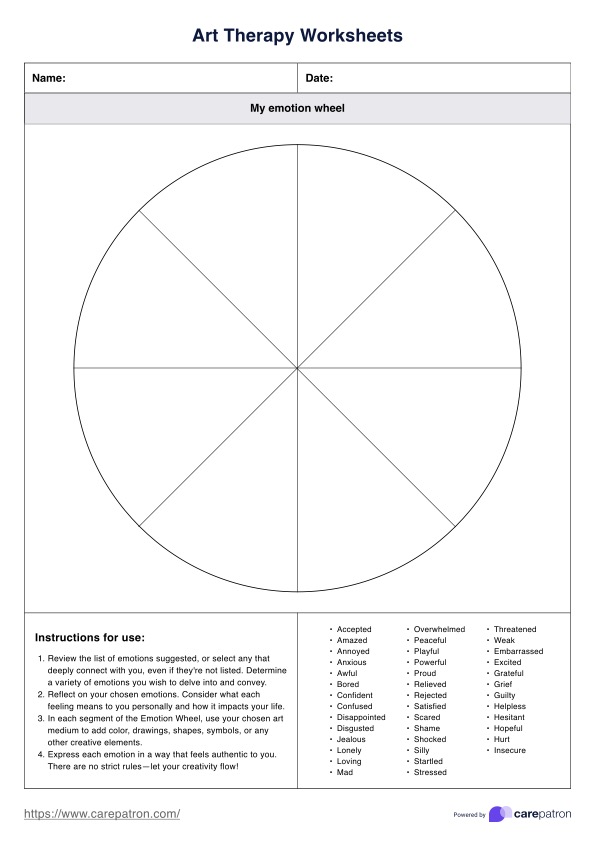
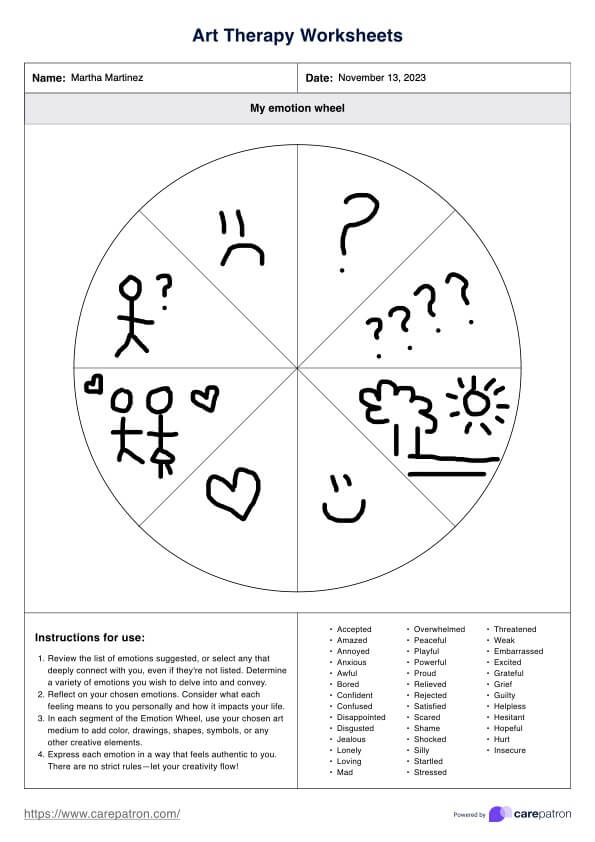

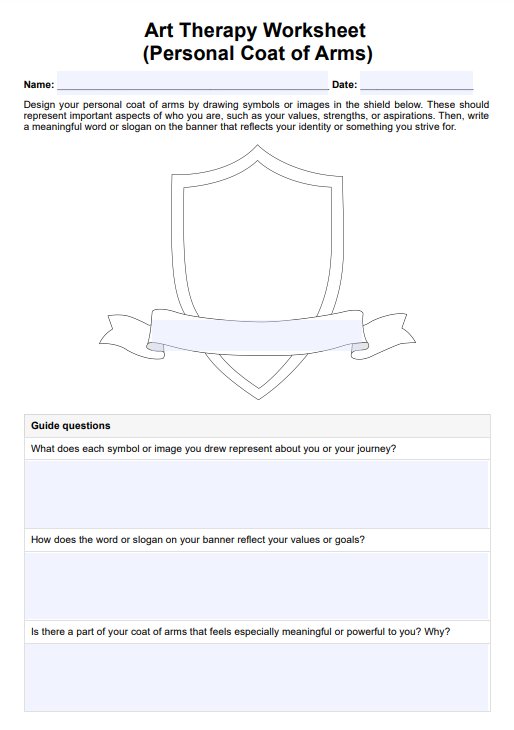
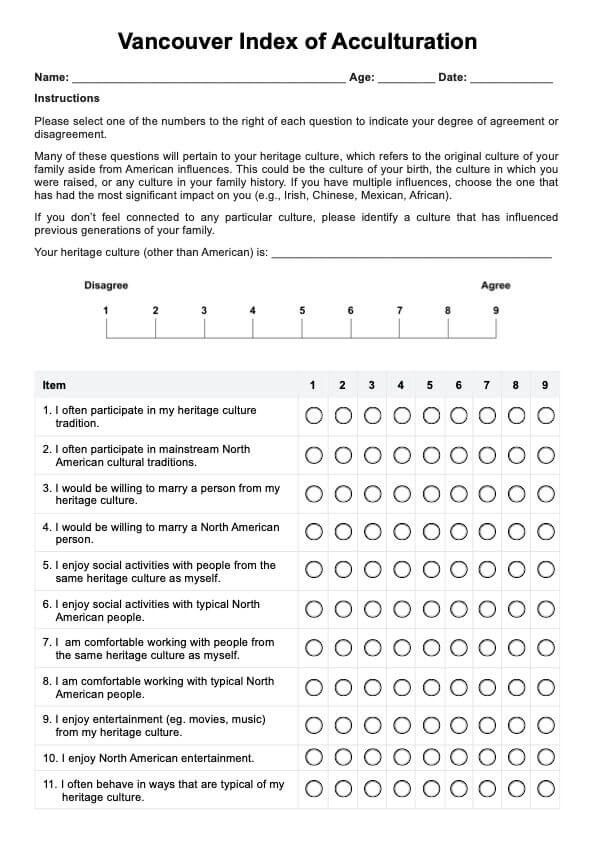
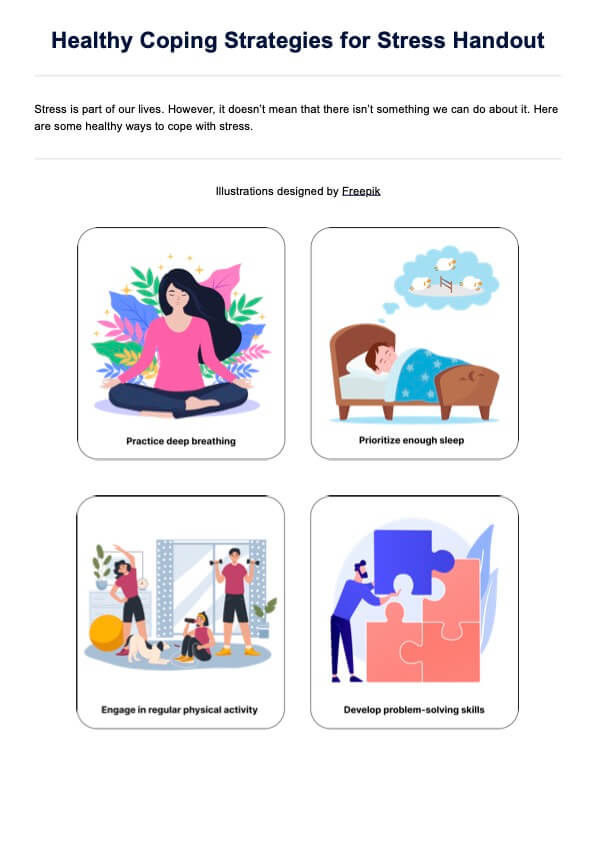
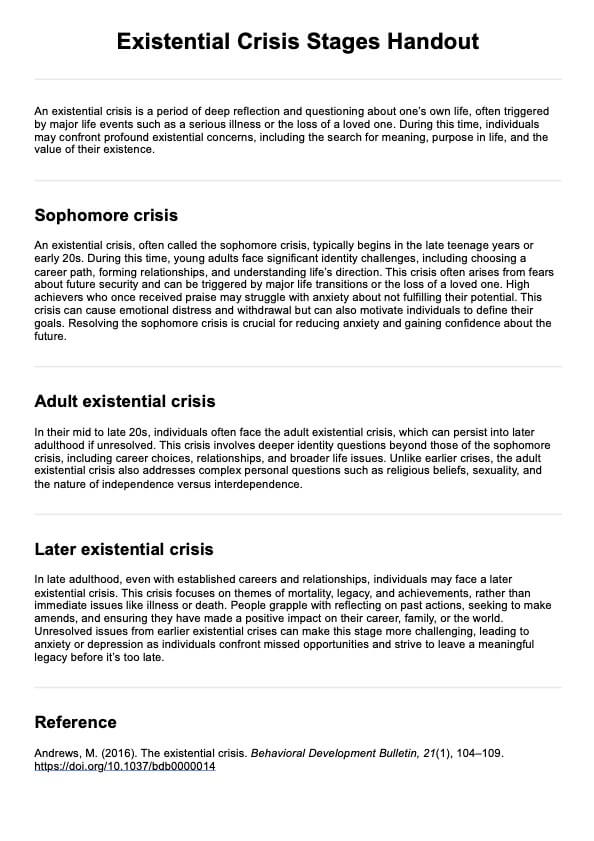









-template.jpg)











































































